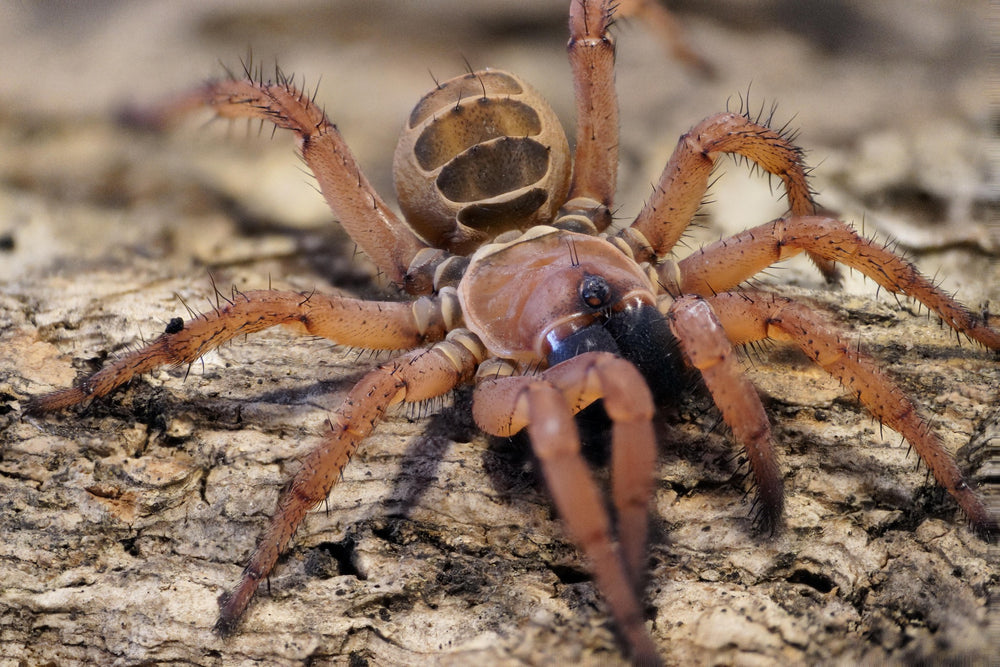
Acanthoscurria geniculata (Brazilian Giant White-Knee) 0.25"
- Live Arrival Guarantee
- Live Animals Ship FedEx Priority Overnight (Mon-Weds)
- In stock, ready to ship
- Inventory on the way
Brazilian Whiteknee Tarantula, Acanthoscurria geniculata Koch, is a beautiful, robust, and colorful tarantula that attains a large size (8.25" diagonal leg span), is quite hardy and a fantastic display species for beginners. A Tim Burton steampunk dreamboat, A. geniculata is a strikingly black base color contrasted with screaming white-striped bands on the distal (furthest from the body) face of each leg segment and zebra-like striping on the patella ("knees"). The legs and abdomen also are lined with long salmon-pink setae. The coxa and trochanter at the base of each leg and the base of the chelicerae are lined in creamy pink setae, while the carapace is cloaked in black velvet-like hairs.
A. geniculata is native to lowland wet, tropical rainforests with little to no dry season in the Amazon Basin, Northern Brazil. They are a terrestrial species that opportunistically burrows under rocks and logs in the wild. A. geniculata is a suitable species for beginners to those having intermediate experience levels. They are quite hardy, having a fast growth rate and a voracious feeding response– pouncing on prey with little hesitation. However, A. geniculata is skittish and quick to dash down in their burrows when spooked. If they cannot make a quick escape, these tarantulas readily kick a cloud of urticating hairs. It is, therefore, best not to handle this species. It is advisable to wear gloves, a long-sleeved shirt, possibly a face mask, and safety glasses or goggles when rehousing and working with larger A. geniculata specimens as their urticating hairs are incredibly irritating.
A terrestrial cage with greater width than height is excellent for A. geniculata, which helps prevent the tarantula from climbing too high and risking a fall injury. Enclosures for mature adults should have at least 4" deep, organic, humusy substrate. The substrate should be kept dry but mist lightly in at least part of the cage periodically. A well-secured or wedged cork hide with a cavity or cave beneath is excellent for this species to build its silk-lined burrow. All in all, A. geniculata is a magnificent species that should be in every New World tarantula collection.

Info on our shipping policy can be found on our T&C page.



